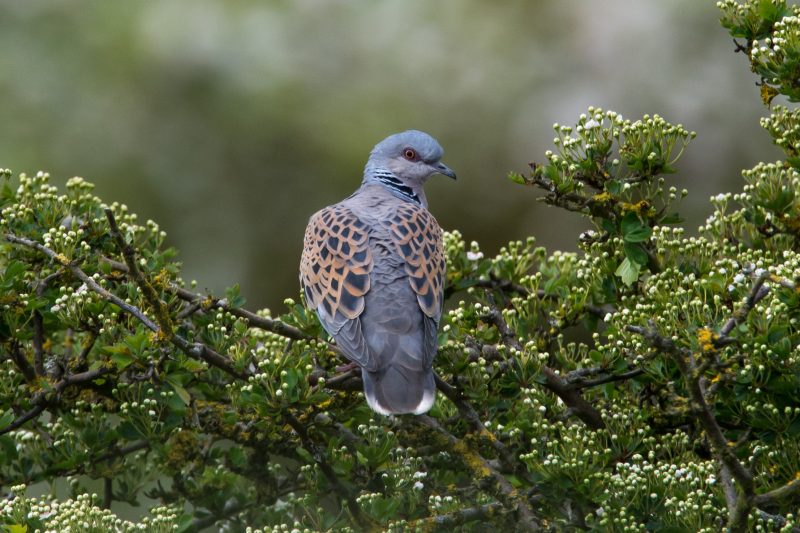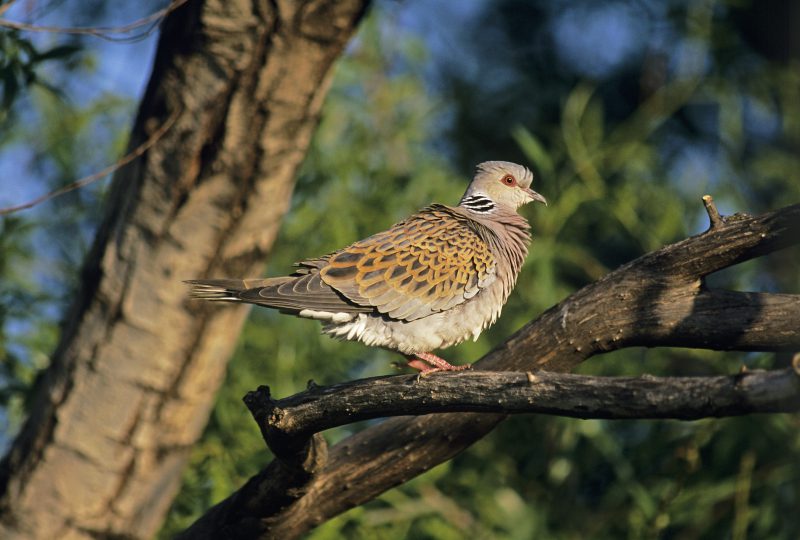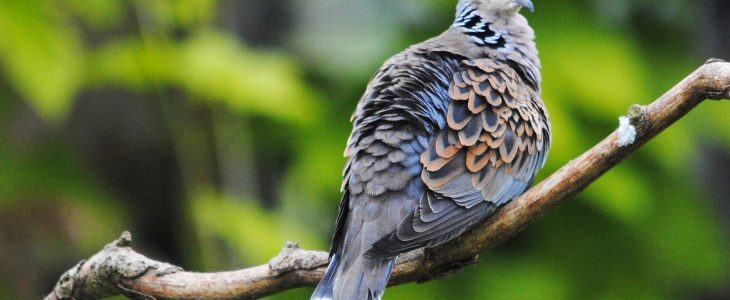Turtle Doves – the dwindling sound of summer
By Robert Morgan, Norfolk Wildlife Trust Reserves Officer
For many people, the gentle rolling purr of the turtle dove is evocative of the splendour of high summer, but this once familiar sound of the sunlit country lanes of rural Norfolk is rapidly being lost. Once common around every village in Eastern England, the turtle dove’s last surviving heartlands is the south of Norfolk.
In much of the countryside, this migratory bird has been replaced by the slightly larger, and resident, collared dove. But the turtle dove’s disappearance has little to do with its fawn coloured cousin and is more
about the destructive nature of humanity. Despite this, you may be lucky enough to see a turtle dove this summer, although centuries of hunting across continental Europe has led it into secretive habits and it’s quick to take flight if you approach.
A small, slim dove with a thin neck and protruding round head, its wings are neatly patterned with light orange-brown and black, and it has a blue-grey panel that’s visible in flight. The head and breast is a soft subtle pink, with adults bearing black bars on their necks. The turtle dove feeds almost exclusively on weed seeds and, although associated with arable parts of the county, it prefers varied and mixed habitats.
One of the many reasons for its reduced breeding success is that everywhere is just too tidy. Lanes have their verges cut before flowers can take to seed, elsewhere herbicides are freely used on ‘unsightly’ weeds, and hedgerows are cut down each autumn, preventing them becoming tall and unkempt, which turtle doves prefer. Being quite shy, quiet corners of our countryside are hard for it to find too.

Despite this, all is not lost!
Several studies have identified the bird’s requirements, and conservation organisations such as the Norfolk Wildlife Trust have been working with
farmers, landowners and other stakeholders to improve its favoured habitats. The now famous Knepp Estate re-wildling project saw two singing males in 1999 increase to 16 in 2020, proving that with proper consideration the turtle dove can be saved as a UK breeding bird. However, as with many aspects of conservation, it takes an international effort to achieve lasting success. The migration of the turtle dove takes it on a
perilous journey to sub-Saharan Africa and back. If the birds escape the mist nets along the coast of the Mediterranean they are then met by the hazard of tens of thousands of guns. In Malta alone the slaughter claims
100,000 birds, with 800,000 shot legally each spring in Spain. In addition, both legal and illegal glue traps take countless numbers across France and Italy.
The turtle dove, mentioned many times by Shakespeare, is an integral part of the culture of England’s summer folklore. So, this June, if you do hear the loud cat-like purrs of the beautiful turtle dove, do spare it a thought, and let’s work to ensure future generations hear the sounds that inspired our nation’s poet.
www.norfolkwildlifetrust.org.uk



